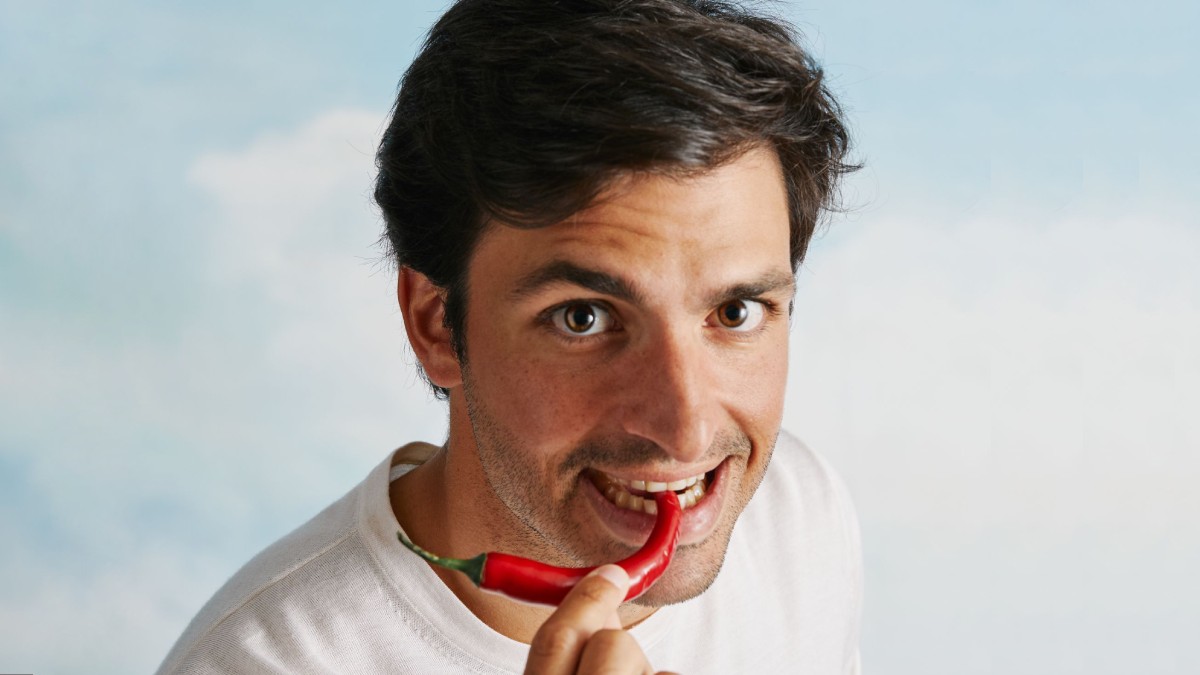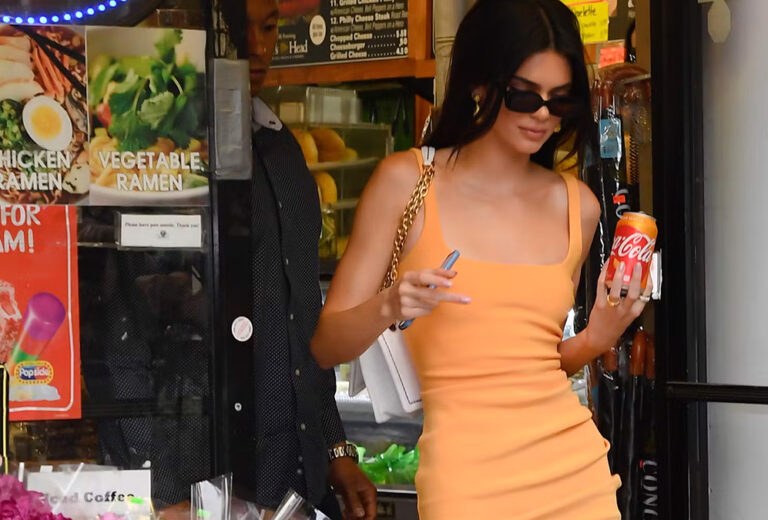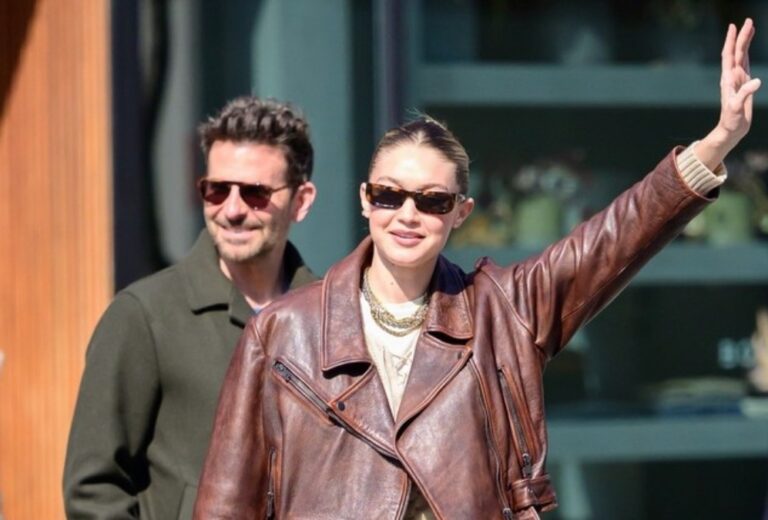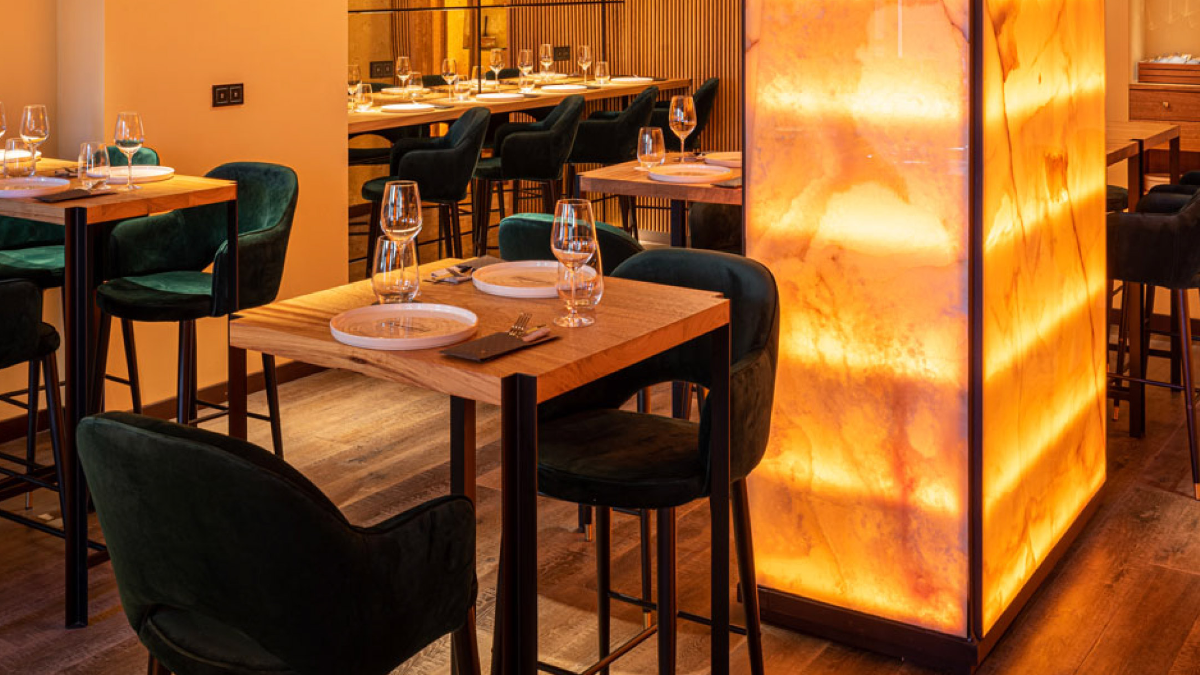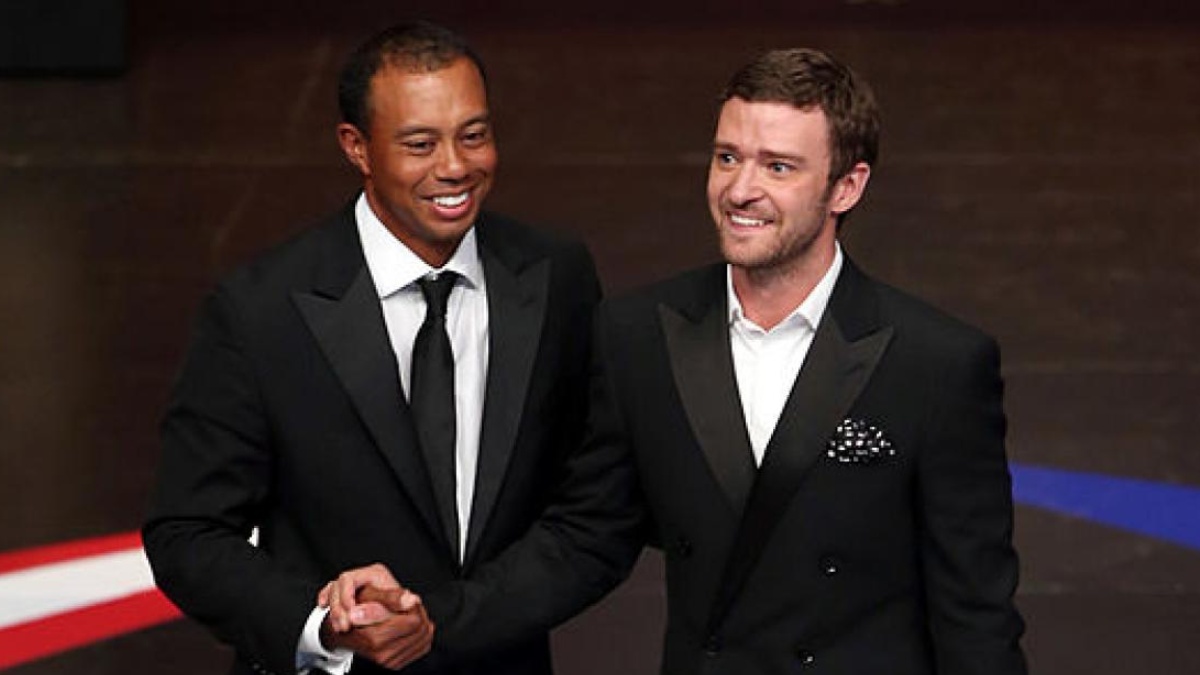Click here to read the Spanish version.
Carlos Sainz Vázquez de Castro (Madrid, 1994) or Carlos Sainz II or Carlos Sainz Jr., the Spanish Formula 1 driver, is already an established figure in international motor racing. The tightness of his work schedule attests to this: although last April saw the longest break without competition in the current Formula 1 season -the Australian Grand Prix, the third of the year, ended on April 2, and the fourth race, the Azerbaijan Grand Prix, would not be held until April 30-, his numerous advertising and promotional commitments leave us little more than an hour and a half to do an interview and take photos for this cover of Tapas. It is the sign of the times: forty years ago it was as easy to approach Nelson Piquet or Alain Prost as it was to interview the members of New Order, backstage at Rock-Ola, after a concert.
Today, on the other hand, even the questions have to pass the preliminary filter of the marketing managers on duty and everything is agreed in advance? Fortunately, Carlos, who is now 28 years old, is still the warm and friendly person he was when he was 21, when in March 2015 he made his Formula 1 debut at the wheel of a Toro Rosso car, the second Red Bull team, or when in 2019 he started the season captaining the legendary McLaren team, with which he achieved his first podium at the Brazilian Grand Prix, finishing the race in third place…, after having started last in qualifying!
The interview takes place at the karting circuit opened in 2000 by his father, the famous two-time world rally champion, at the Európolis business park in Las Rozas, Madrid. The same circuit where his father began to guide his son when he was twelve years old. Now, as the first driver of Scuderia Ferrari, with which he has started his third season – after having achieved his first Grand Prix victory at Silverstone on July 3, 2022 – he is amazed that at 28 years of age “I am already considered one of the most experienced”.
Formula 1 is a sport that has changed a lot with the times. In the past, in the era of great names in motor racing such as the Argentine Juan Manuel Fangio, the Italian Alberto Ascari, the Australian Jack Brabham or the British Graham Hill or Jackie Stewart, those who won the championships were drivers over thirty years old -even over forty, in the case of Fangio-. However, since the German Michael Schumacher won the first of his seven world championships at the age of 25, the triumph is a matter of younger and younger youngsters -except for Niko Rosberg and Jenson Button.
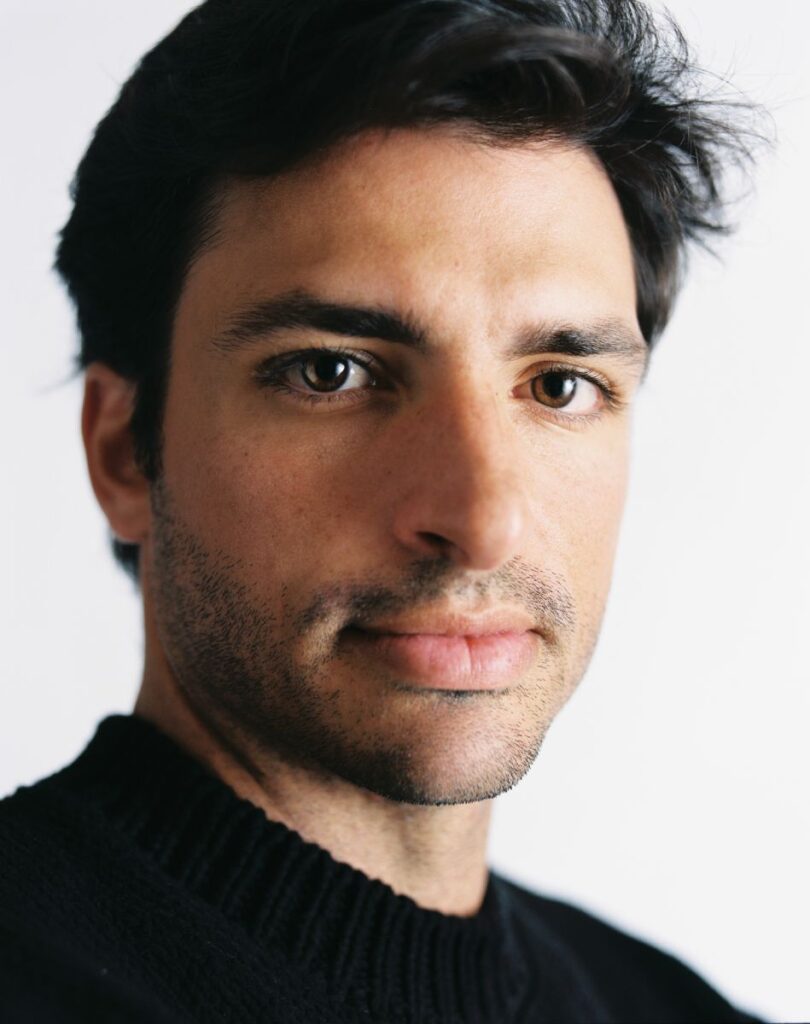
“It’s the direction modern sport has gone in,” reflects the young driver. It’s not just in Formula 1, but in all sports today. The athletes who break records are getting younger and younger, and they are getting younger and better prepared for top competition”. The good thing is that, although they arrive younger, professional careers, at least in motor racing, are considerably longer. And with a chance of winning… Today, people of a respectable age (as is the case, in Formula 1, of Fernando Alonso) or more than respectable (as is the case, in “survival” rallies, of Carlos Sainz Sr., Nasser Saleh Al Attiyah or Stéphane Peterhansel), are still in a position to continue winning grand prix or major championships against the insulting power of the young.
Carlos Sainz recognizes that “motor racing is a very physical sport, but perhaps not as physical as athletics, swimming or other sports. In motorsport, to be able to compete at a high level, age is not so important. Nowadays people reach 40, which they call ‘the new 30’, very, very fresh, with a lot of aerobic and physical capacity. And also reflexes. And that makes athletes like my father, who is already 61, or Fernando, who is over 40, capable of doing well in motorsport”.
“I love sports and training. For me, training is not only a sacrifice, but also something I enjoy.”
Carlos Sainz
Carlos Sainz himself aspires to “continue for many years in Formula 1, until I get tired and meet my goals”. To do so, he trains methodically and intensely. “I love the sport and training. I’m lucky that for me, training is not just a sacrifice, but also something I enjoy, something I like to experiment with. I am very sporty and I do all kinds of sports; whatever sport you ask me, I try to practice it at a decent level, but it is true that I have a very specific planning of cardiovascular training and strength training, which are for me the fundamental sessions of the day to day. The rest I leave for enjoyment, such as paddle tennis, golf or soccer. The strength training and running, at the cardiovascular level, are the fundamental things I have to do on a daily basis”. The memory of Michael Schumacher’s unfortunate skiing accident, even though it occurred when he had already retired from competition, leads us to ask whether there are sports that are “forbidden” by contract. There is this urban legend,” he explains, “that pilots can’t go skiing or skydiving and so on. I don’t have anything signed that doesn’t allow me to do that…, but I’m not stupid. I know that a skiing fall or an accident would compromise my sporting career. And I’m the first one to take precautions so that it doesn’t happen”.
Food in the paddock
In elite sport, diet is as important as daily training. Carlos says that in the paddock “they eat very well: all Formula 1 teams have a hospitality and a very, very good catering. I can’t even tell you about Ferrari’s Italian food…”. But the nutritionists are on the lookout… “From Thursday to Sunday, I have a strict diet and I can’t eat from the buffet that is prepared for everyone. As an athlete, I have to eat my specific dishes… and when I pass by the buffet, I’m very jealous!”.
“I don’t cook much, to be honest, but the little I do cook, I do it decently. Whenever I come to Spain, I always go for the chuletón or the peppers”.
Carlos Sainz
Since she has been living in Italy, she says she has become a specialist in transalpine cuisine. “I learned to make a ‘real Italian’ carbonara pasta, taught by an Italian. And I’m pretty good at it. I don’t cook much, to be honest, but what little I do cook I do decently. I like pasta and pizza very much, but in Italy they eat very well. But every time I come to Spain I always go for the steak or the peppers and, of course, the tortilla, the ham and the croquettes”.
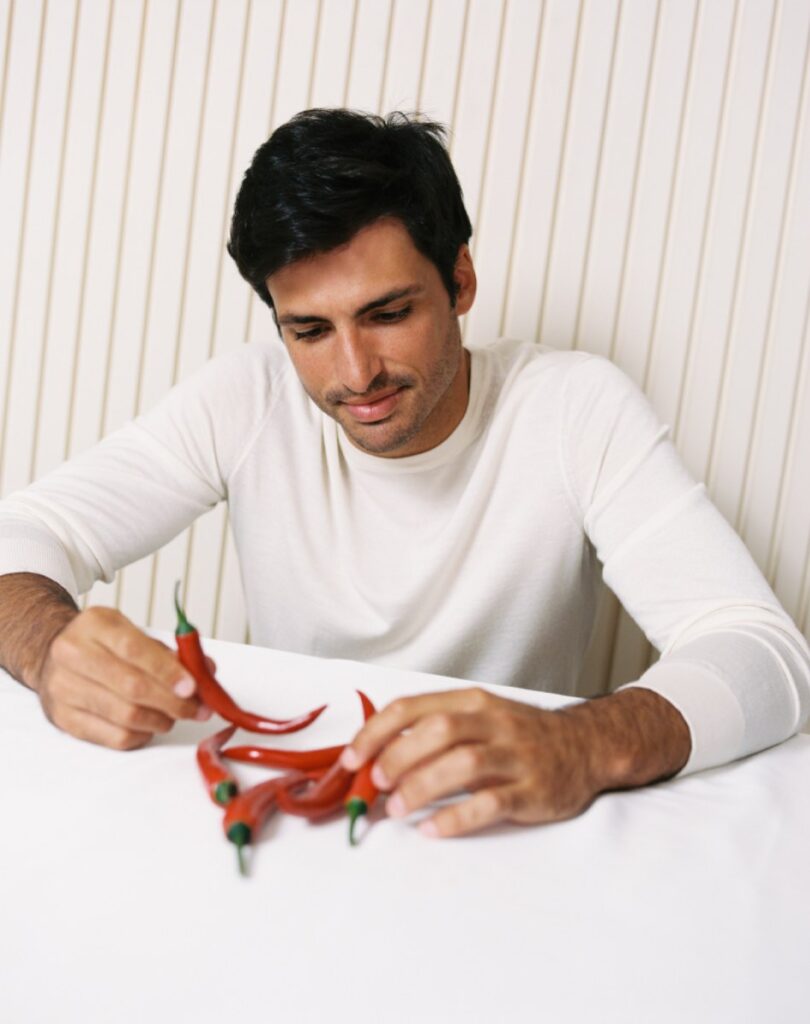
When the Spanish Grand Prix arrives on June 4 at the Montmeló circuit, Carlos will act as an ambassador for Spanish cuisine among the other drivers. “When we come to Spain I do recommend restaurants, but I also do it if I see a worthwhile Spanish restaurant in an international place. Sometimes I bring a little plate of ham for them to try, but it’s complicated because we each go our own way”.
And as important as the daily training and diet is to have sponsors to support the enormous cost of the competition. Not now, of course, because Carlos is an official Ferrari driver, but when he started in the lower categories it was important for someone to contribute money. In that sense, Estrella Galicia has been with Carlos Sainz since 2013, when he competed in GP3, one of the lower categories of Formula 1.
Do the best drivers win races?
Time is running out, but we don’t want the conversation to end without him answering an almost rhetorical question, given the dictatorship exercised since 2010 by Red Bull (four consecutive titles with Sebastian Vettel, and another two, in 2021 and 2022, with Max Verstappen) and Mercedes (seven titles: six by Lewis Hamilton and one by Nico Rosberg): To what extent are the best drivers the ones who win the races? Carlos admits that “Formula 1 is a sport of drivers, but above all it is also a sport of machines. It has always been a championship of brands and always will be. In the end, the best car is usually the one that ends up winning (of course with a good driver)”.
He acknowledges that it is not easy to change the dynamics, although “in Formula 1 we have always tried to take steps to equalize the forces a bit,” he explains. This year we have the budget limit and a much more restrictive regulation that does not allow us to develop the car too much: there are trade-offs and if you are ahead you have less wind tunnel hours, for example”.
At 28 years old, too old for the new times and too young to think about retirement, he knows how to deal with the pressure to finish exploding as a world champion. “I wouldn’t call it impatience, but I would call it ‘a tremendous desire’. It’s my ambition. It’s what I work for every day and it’s what I’m focused on for the next five to ten years ahead of me: to be world champion. This is a sport in which twenty of us come together who are used to winning before reaching Formula 1. We are the ones who have won in lower categories and, suddenly, we get to Formula 1 and you don’t win if you don’t have the right car. And it’s hard to get used to it at the beginning, but then you get used to it, because you know that only one of the twenty of us can win”.
Urban circuits
Since 1967, and except for four years -from 1982 to 1985, both inclusive- in which no motor racing Grand Prix was held, Formula 1 has always been present in Spain. First at the Jarama and Montjuïc circuits, and then at Jerez de la Frontera and Montmeló. Between 2008 and 2012, a second race was also held in Spain, in a dismountable urban circuit that was installed in Valencia, where the so-called European Grand Prix was held.
The races of this alternative parallel championship, Formula E, for single-seater cars powered 100% by electric energy, have in recent years popularized races on dismountable urban circuits in cities as exotic for this type of sport as New York, Santiago de Chile, Rome or Moscow, which run along street circuits. “They are circuits with more risk, where you feel the speed more, but they are also becoming more and more common. They are fun circuits that attract more public, because you are inside the big cities and that is also, a little bit, the direction that Formula 1 has taken recently”. Sainz tells us that in recent months rumors have begun to be heard about the possibility of Spain once again hosting two championships each year, precisely with a street circuit in Madrid. “For me, as a Spanish driver, the priority is for Spain to host an important event for Formula 1, whether in Barcelona or Madrid. I don’t care. That’s what’s important,” concludes the driver.

